The People
Dry Creek Rancheria Band of Pomo Indians
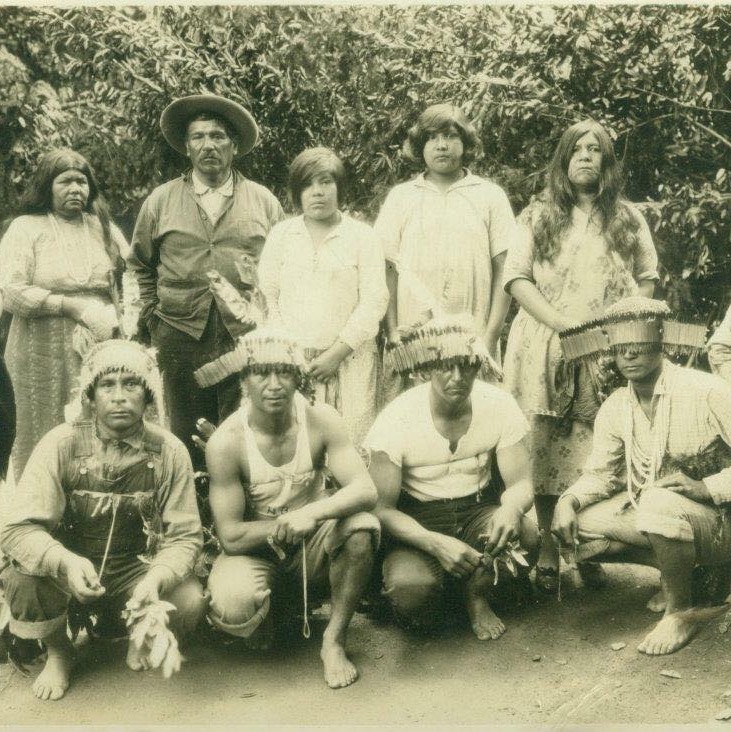
Discover More About Our Tribe
The Pomo traditionally lived in small, autonomous villages, and relied on fishing, hunting, and gathering for their livelihood. Today, the Pomo people continue to maintain their cultural traditions and have worked to preserve their heritage through art, music, and language revitalization programs.
Who We Are
The Pomo are not one tribe, but approximately 21 independent communities speaking seven different language dialects. All groups have ties to Northern California and primarily reside in Sonoma, Lake and Mendocino counties. Settlement in the Dry Creek area by the Southern Pomo, called the Mihilakawna and Makahmo, was evident by 500 A.D. Descendants of these ancient inhabitants survive and continue to live as a tribe in the Alexander Valley, and are known as the Dry Creek Rancheria Band of Pomo Indians.

Hunt & Gather
Historically, Pomo groups relied on the abundant fish, game, and plants of the region. This hunter and gatherer lifestyle enabled the Pomo to survive through the year. The abundance of natural resources meant Pomo were able to enjoy a comfortable and affluent existence. The Dry Creek people used hundreds of regional plants and game for food, but the primary foodstuff was acorns, which they gathered, stored, and processed throughout the season.
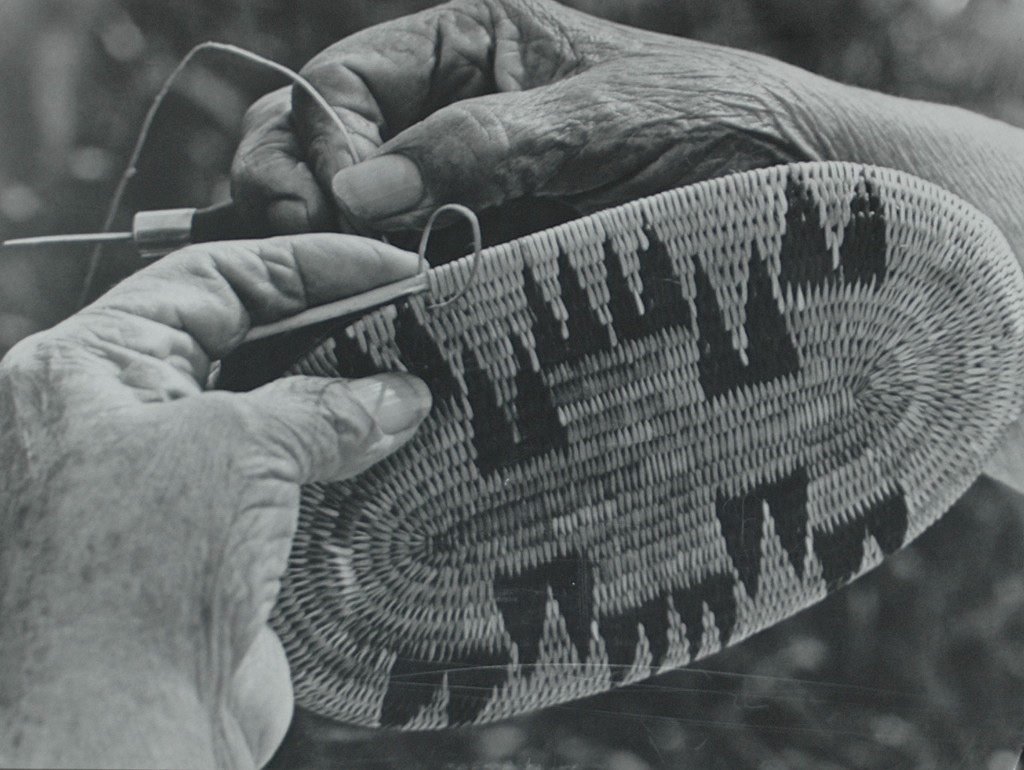
Hunt & Gather
Historically, Pomo groups relied on the abundant fish, game, and plants of the region. This hunter and gatherer lifestyle enabled the Pomo to survive through the year. The abundance of natural resources meant Pomo were able to enjoy a comfortable and affluent existence. The Dry Creek people used hundreds of regional plants and game for food, but the primary foodstuff was acorns, which they gathered, stored, and processed throughout the season.
Basket Weaving Tradition
One shared tradition among all the Pomo communities was the art of fine basket weaving. The intricate basketry, created out of necessity, developed over time into an important art form. Baskets were used for cooking, food gathering, storage, and healing. In addition, sturdy elegant woven cradle baskets held infants, while ornate baskets were created for specific rituals and family memorials and ceremonies integral to daily Pomo life. Vibrant hues of bird feathers and glass seed beads, clamshell discs, and quail feather plumes decorated gift baskets used for special occasions such as weddings and funerals.
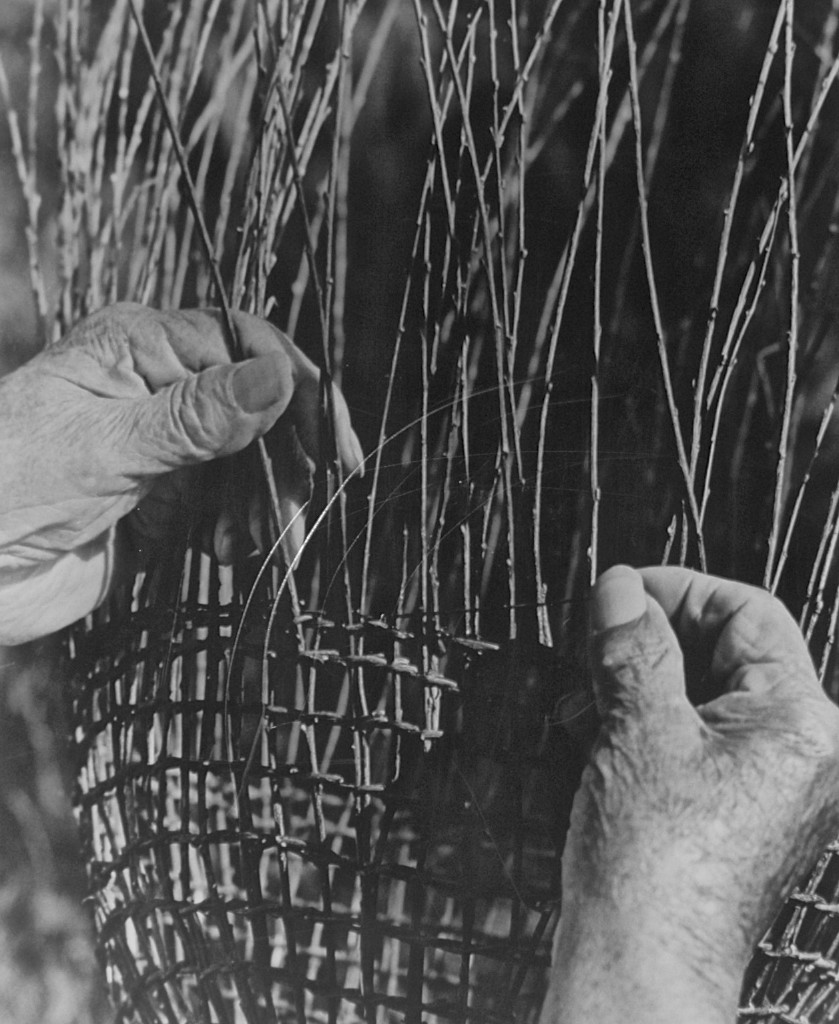
Artists
In addition to baskets, Pomo artists manufactured elaborate jewelry fashioned front abalone and clamshells which they assembled during the winter months in Dry Creek. During the summer, Pomo groups traveled to and from various sites along the coast where they fished and gathered a variety of clams and seaweed from the bounty of the sea to broaden their diet staple, acorns. Using nature’s resources, Pomo would create stunning, intricate, and unique forms of clamshell necklaces worn during dance and ritual celebrations by both men and women.
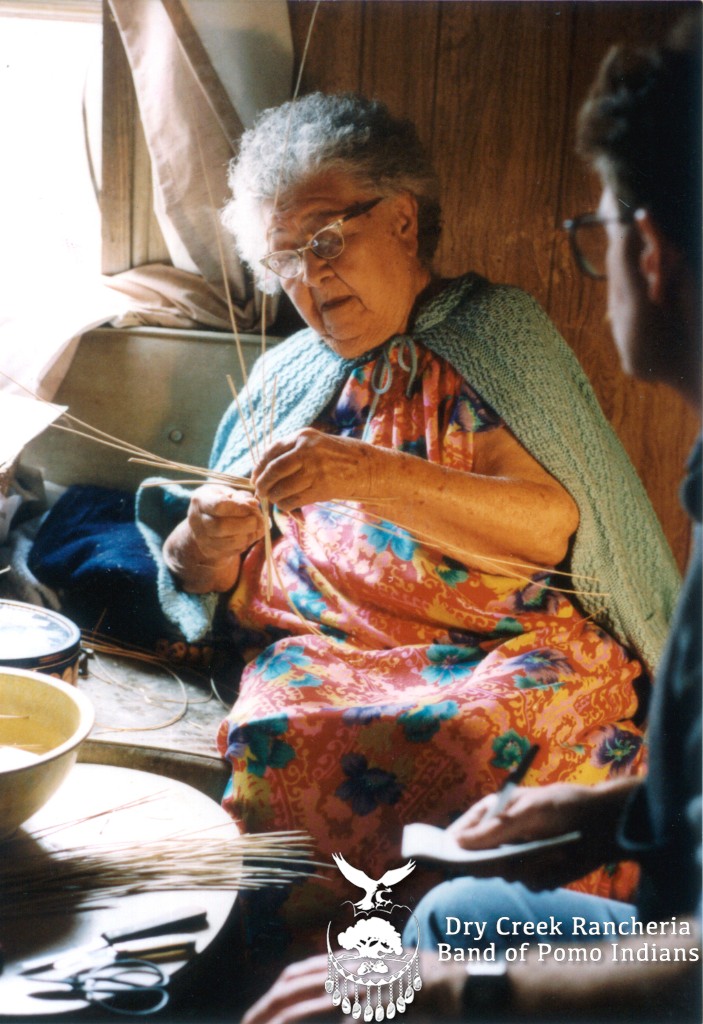
Artists
In addition to baskets, Pomo artists manufactured elaborate jewelry fashioned front abalone and clamshells which they assembled during the winter months in Dry Creek. During the summer, Pomo groups traveled to and from various sites along the coast where they fished and gathered a variety of clams and seaweed from the bounty of the sea to broaden their diet staple, acorns. Using nature’s resources, Pomo would create stunning, intricate, and unique forms of clamshell necklaces worn during dance and ritual celebrations by both men and women.
The “Moneyers” of Northern California
Pomo produced strings of clamshell discs used as money. They were known as “the moneyers” of Northern California. Clamshell discs are flat and button-like, with a smooth, subtle luster and polish from years of handling. Used for monetary exchange, strings of shell discs (measured by exact width and diameter) could be measured and counted. Perhaps this affinity for trading attracted the migrating Russian seafarers who entered the area in the early 1700s to hunt sea otter.
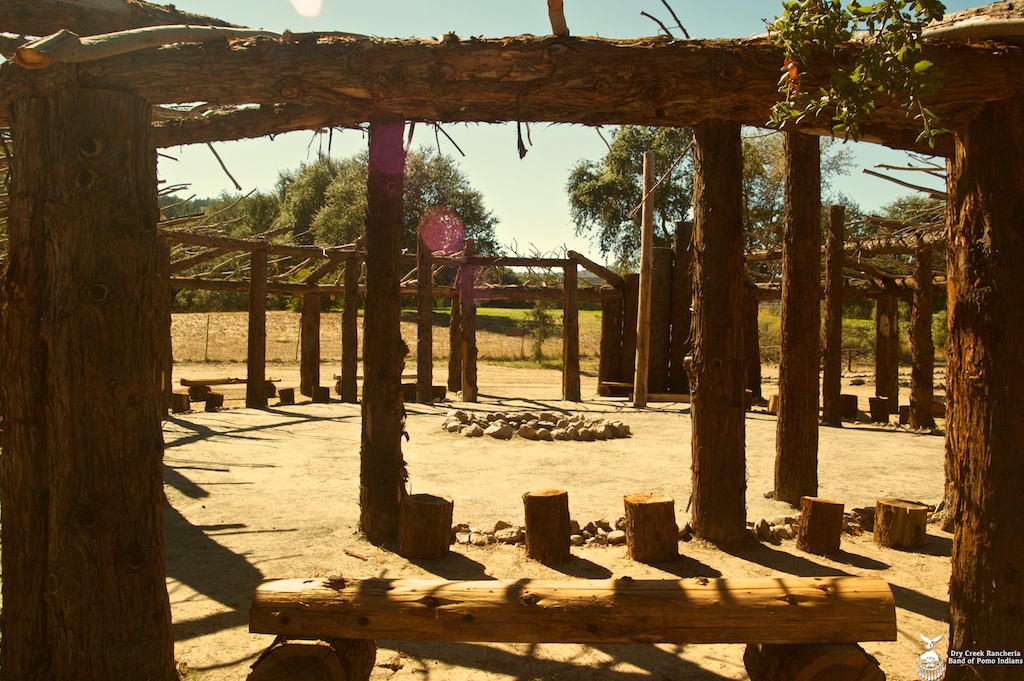
19th & 20th Centuries
Exploitation of Pomo communities first by Russian, secondly by European, and, eventually, American groups throughout the 19th and 20th centuries, imposed heavy tolls on the Pomo. By the mid 1800s, American immigrants, dreaming of new lives, arrived in California seeking gold. The combination of the number of settlers to the region and the richness of agriculturally valuable lands resulted in the federal government’s decision to resettle the Pomo and force them to relocate onto newly established reservations or rancherias. Today, the relocation is remembered as one of the most destructive in Pomo history and is referred to as the “Death March.”
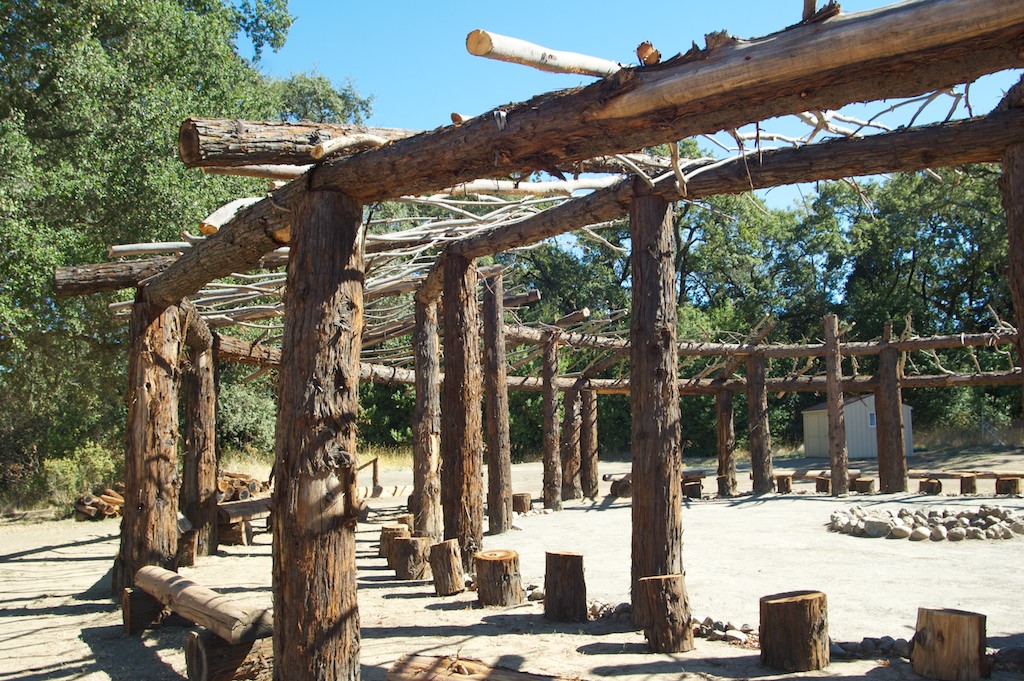
19th & 20th Centuries
Exploitation of Pomo communities first by Russian, secondly by European, and, eventually, American groups throughout the 19th and 20th centuries, imposed heavy tolls on the Pomo. By the mid 1800s, American immigrants, dreaming of new lives, arrived in California seeking gold. The combination of the number of settlers to the region and the richness of agriculturally valuable lands resulted in the federal government’s decision to resettle the Pomo and force them to relocate onto newly established reservations or rancherias. Today, the relocation is remembered as one of the most destructive in Pomo history and is referred to as the “Death March.”
The Great Decline
With completion of the new Central Pacific Railroad in 1869, the onslaught of settlers to the area quickly displaced growing numbers of Pomo from their traditional land. Along with the influence of the Europeans, California Indians, once estimated at 330,000, declined to only 15,000 by the early 1900’s. In the 1910 census, only 1,200 Pomo were recorded.

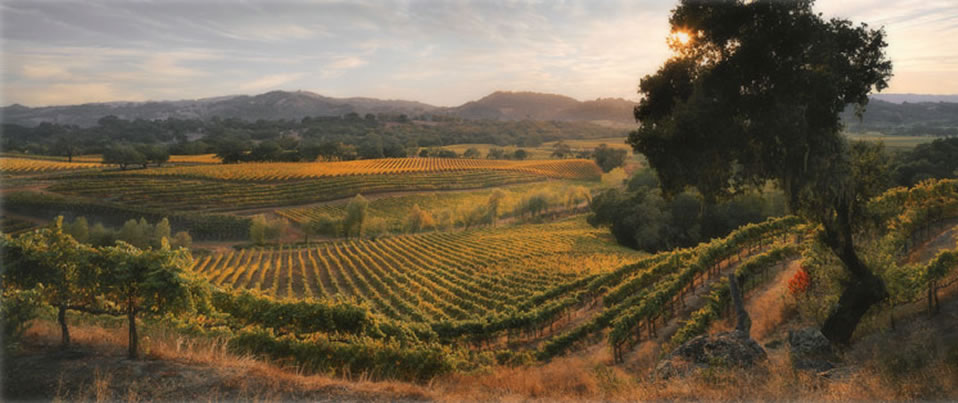
1915 & Now
In addition to the devastation to tribal life, the loss of traditional lands was a direct result from the decades of forcible relocation from area to area. Today, the original Dry Creek Pomo habitation area is flooded by the water from the Warm Springs Dam and Lake Sonoma. Army Corps of Engineers reports, as well as other historical documentation, relates to some 86,000 acres lost to 40 new settlers. Official recognition for the Mihilakawna by the federal government did not occur until 1915, thus creating the Dry Creek Rancheria Band of Pomo Indians. With a small population remaining on this remote 75-acre area of steep slopes, the Dry Creek Band remains together without segregated land entitlements. Communal ownership meant the land remained available to all members of the tribal community, not parceled out to individual members of the Tribe.
